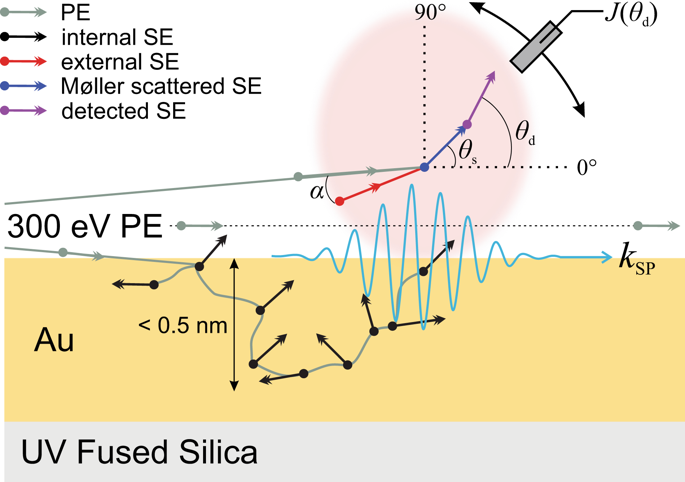Communications Physics ( IF 5.4 ) Pub Date : 2020-01-29 , DOI: 10.1038/s42005-020-0295-5 S. R. Greig , J. B. Khurgin , A. Y. Elezzabi

|
Ultrafast processes occurring on nanoscale surfaces can be probed with ultrafast low-energy electron pulses. Specifically, for metallic samples, the interaction of free electrons with surface plasmon fields provides insight into the nanoscale electron dynamics at the surface. Current models and experiments include the interaction of electrons with the sample, but ignore electron–electron and electron–plasmon interactions. Here we show that secondary electrons and their interaction with the incident primary electrons via nonrelativistic Møller scattering in the presence of optical and surface plasmon fields significantly alters the electron dynamics probed with ultrafast low-energy electron microscopy. Modeling this electron–plasmon interaction is key for interpreting ultrafast electron dynamics on metallic surfaces.
中文翻译:

非绝热隧道电离表面等离子体激元场中的非相对论性电子-Møller散射
可以用超快的低能量电子脉冲探测纳米级表面上发生的超快过程。具体而言,对于金属样品,自由电子与表面等离激元场的相互作用提供了对表面纳米级电子动力学的了解。当前的模型和实验包括电子与样品的相互作用,但忽略了电子-电子和电子-等离子体相互作用。在这里我们表明,在存在光学和表面等离激元场的情况下,二次电子及其通过非相对论性Møller散射与入射的一次电子的相互作用显着改变了用超快低能电子显微镜探测的电子动力学。对这种电子-等离子体相互作用进行建模是解释金属表面超快电子动力学的关键。











































 京公网安备 11010802027423号
京公网安备 11010802027423号